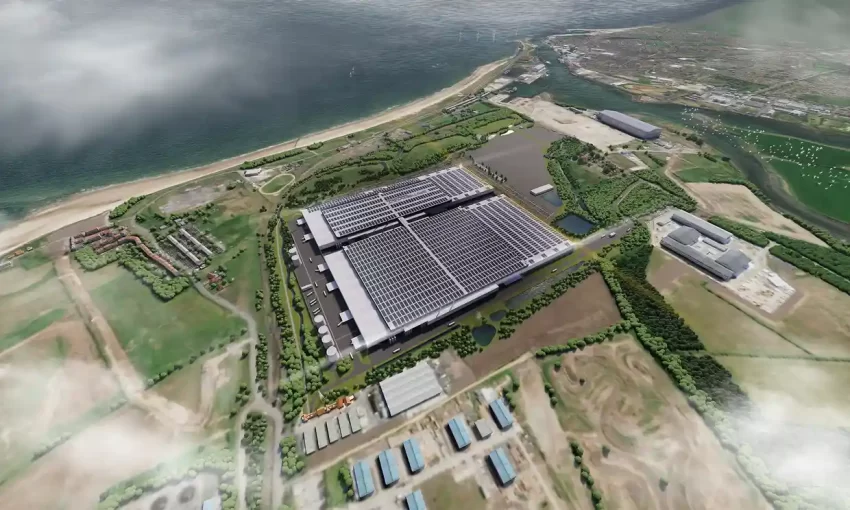
Virgin Galactic sent paying customers to the edge of space for the first time, a milestone for the Richard Branson-founded company almost two decades in the making.
The VSS Unity craft reached space at about 9:30 a.m. local time in New Mexico, Virgin Galactic revealed in a livestream of the event on its website Thursday. That was about an hour after the flight took off, carrying six people on board, including researchers from the Italian Air Force and the National Research Council of Italy.
The commercial debut officially ushers Virgin Galactic into the ranks of space tourism providers alongside the likes of Elon Musk’s SpaceX and Jeff Bezos’ Blue Origin LLC. Virgin Galactic has said it expects to move soon to a regular cadence of monthly commercial flights, bringing in much-needed revenue.
While the company has carried employees on several previous test missions, the latest launch was the first with ticket-holding passengers. It’s Virgin Galactic’s highest-profile flight since Branson flew to the edge of space in 2021.
“This is a big deal,” Mike Moses, Virgin Galactic’s president of spaceline missions and safety, said in an interview before the launch. “It’s the thing we were founded for.”
Delayed Plans
It comes much later than planned: Virgin Galactic was started in 2004 and had hoped to ferry tourists to the cosmos as early as 2008. Over the years, the company has endured numerous delays and setbacks, including fatal accidents, regulatory investigations and lawsuits. The company has lost hundreds of millions of dollars each year since it went public in 2019 while generating only nominal revenue.
Despite the successful mission, Virgin Galactic’s frequently volatile stock tumbled 11% on Thursday, renewing questions over its business model. The company now faces pressure to make Branson’s dream of offering regular space tourism missions a reality.
“Branson founded Virgin Galactic almost 20 years ago now,” said Caleb Henry, director of research at space advisory firm Quilty Analytics. “He’s been very patient with trying to see this company through to success. I would say the time is coming where they really do need to deliver on that.”
Virgin Galactic has a narrower focus than its competitors, which have other revenue streams such as satellite-launch services or cargo supply missions for NASA. The company’s chief executive officer, Michael Colglazier, said he’s confident focusing on suborbital human space travel first will give the company the ability to branch into other businesses later.
The company doesn’t expect to be profitable until it introduces a new class of spaceplanes called Delta in 2025. Optimized for faster turnaround and easier refurbishment, the Delta ships are needed to make the business truly work, Colglazier said.
Virgin Galactic will probably become profitable around 2026 or 2027, according to Colglazier, and the pool of potential customers is expected to be small for awhile.
“I think this is going to be a capacity-constrained business for a couple of decades, at least,” Colglazier said. “We need to normalize this industry, it’s not usual for your neighbor to go to space.”
Thursday’s flight, called Galactic 01, offered the crew an opportunity to run experiments and test payloads in a space environment. The passengers included Walter Villadei and Angelo Landolfi of Italy’s air force, as well as Pantaleone Carlucci, an engineer with the National Research Council of Italy. They were joined by Virgin Galactic employee Colin Bennett and two pilots.
Early setbacks
The company’s primary vehicle is its VSS Unity, which is carried aloft under the wing of an unusual, twin-fuselage carrier aircraft called VMS Eve. Once the pair reaches an altitude of 46,000 feet, the spaceplane detaches and ignites a hybrid rocket-engine, propelling it to sub-orbital space. The craft typically reaches a height just above 50 miles, where the crew can see the curvature of the Earth from the dark of space, before gliding back down to the runway.
Virgin Galactic has had lofty ambitions for this spaceflight model. In its early days, the company took deposits from A-list names including Ashton Kutcher, Justin Bieber and Leonardo DiCaprio. Tickets initially cost a quarter of a million bucks apiece before going up.
But Virgin Galactic faced serious setbacks during development. In 2007, three employees at Scaled Composites, a contractor started by aerospace entrepreneur Burt Rutan, were killed during an engine test for Virgin Galactic’s spaceplane. In 2014, one pilot died and another was injured when a Virgin Galactic vehicle crashed during a test flight. The company acknowledged some customers canceled reservations following that accident for various reasons.
Still, Moses said the majority of customers have remained. “These folks have been patient for a long time.”
Virgin Galactic marked an important milestone in 2018, when it reached space for the first time, sending two co-pilots to an altitude of 51 miles. It has since sent several more crewed test missions to space.
In 2019, the company went public via a reverse merger with a special purpose acquisition company, capitalizing on the blank-check boom to refill its coffers. At the time, Virgin Galactic predicted an imminent start to commercial operations and that it would be flying more than 1,500 customers a year by 2023.
The company appeared to be nearing a breakthrough in 2021, when it launched its billionaire founder to space. The high-profile flight garnered headlines across the world as Branson beat Bezos, but it soon emerged that the mission had deviated from its intended flight path, prompting a brief investigation overseen by the US Federal Aviation Administration.
Virgin Galactic continued to put off commercial operations for more than a year as it upgraded the vehicle. During that time, it also battled lawsuits over issues such as information disclosure. And it burned through cash — about $400 million last year alone.
“That’s not a healthy way to run a business in the long term,” said Henry of Quilty Analytics. “That’s not a healthy way to run a business in the medium term. That is something that you want to get away from as fast as possible.”




